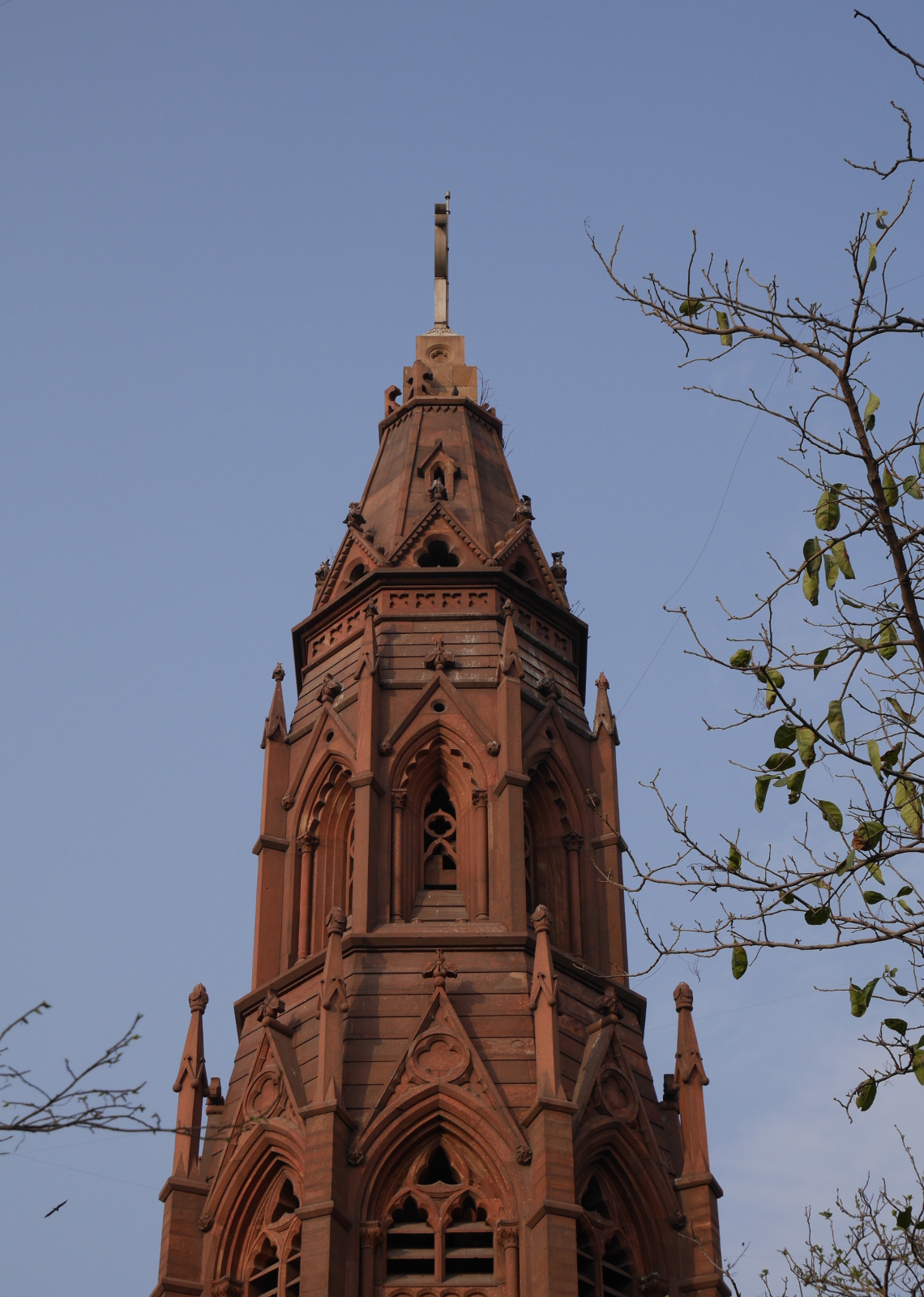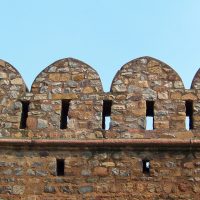The Red Line of the Delhi Metro runs on an elevated trackway north of Shahjahanabad, or Old Delhi. Two stops west of Kashmere Gate, at Pul Banshgah, the view from the station platform takes in a forested hill that rises above the city. Close to the top of the hill, a Gothic spire rises incongruously out of the trees. From the metro station, it is just possible to make out a cross at the top of the spire. It looks like a steeple that has been separated from its church.
The structure is actually a purpose-built memorial. It was built by the British to commemorate the greatest armed revolt against their rule in India, the Sepoy Mutiny of 1857-58.
In 1857, the British-owned East India Company (EIC) ruled India as company property, in cooperation with local kings. Although the EIC had a trade monopoly granted to it by the British Crown, the company’s leaders were not under the authority of anyone but themselves. The EIC functioned as India’s government, because it had the authority to levy taxes, develop infrastructure, and raise an army. The company army consisted mainly of native troops known as sepoys (from the Hindustani word sipahi, soldier) serving under British officers.
The Sepoy Mutiny broke out after the EIC army introduced new gun cartridges that were more efficient to use because the soldiers tore them open with their teeth, leaving one hand free for holding their guns. A rumor circulated among the troops that the cartridges were greased with cow and pig fat, thus making them ritually unclean for both Hindu and Muslim soldiers. When the EIC officers refused to recall the new cartridges, sepoys across north India revolted. Rallying behind Bahadur Shah, the Mughal Emperor in Delhi, the sepoys managed to gain the upper hand temporarily. Ultimately, though, the EIC, with the help of local kings who had remained loyal, managed to defeat the rebellious sepoys. Bahadur Shah was deposed and sent to Burma to spend the rest of his life in exile. Since the EIC had done a poor job managing India, the British Crown stepped in to rule India directly. This was the beginning of the British Raj, which lasted until Indian independence in 1947.
The Sepoy Mutiny was a bloody conflict, and both sides committed atrocities. The Mutiny Memorial commemorates the British soldiers and loyal native troops who died defending Delhi against the rebels in 1857. In contemporary Indian memory of the Mutiny, the rebels were the heroes while the British troops were the villains. Indian history textbooks portray the Mutiny as the “First War of Indian Independence,” with the implication that Gandhi’s movement against British rule was the second. This portrayal is based on a selective reading of historical evidence, since large portions of India remained loyal to the EIC throughout the Mutiny.
Modern India has an ambivalent relationship with its memory of the colonial past. On the one hand, Indians are still proud that the British are gone and they are their own masters. But it has proven difficult to forget that during the colonial period, most Indians collaborated with the British most of the time. In some instances, statues of British monarchs and other embarrassing reminders of colonial rule have been moved to museums or sold to other Commonwealth countries such as Canada. Other colonial relics, like the colossal architecture of New Delhi, are too big to move, and therefore these relics have been adopted as symbols of independent India’s government.
The Mutiny Memorial in Delhi falls somewhere in between these extremes. In most cases, Indians after independence have not cared to tear down colonial monuments out of spite. This benign neglect has saved the Mutiny Memorial from destruction, and as of 2015 the monument still rises above the modern city of Delhi. But just because it still stands does not mean it is accessible or interpreted. When I visited in February of this year, it took me a while to locate the monument in the ridge park, as there were no signs pointing to it. When I reached it, I was disappointed (albeit not really surprised) to find that the gate at the base of the monument was locked and thorn-forest had grown up around it. Although it would be too extreme a measure to actually tear down the Mutiny Memorial, the British casualties on the side of the conflict have no meaning for modern Indians, so why bother making the monument accessible?







Leave a Reply